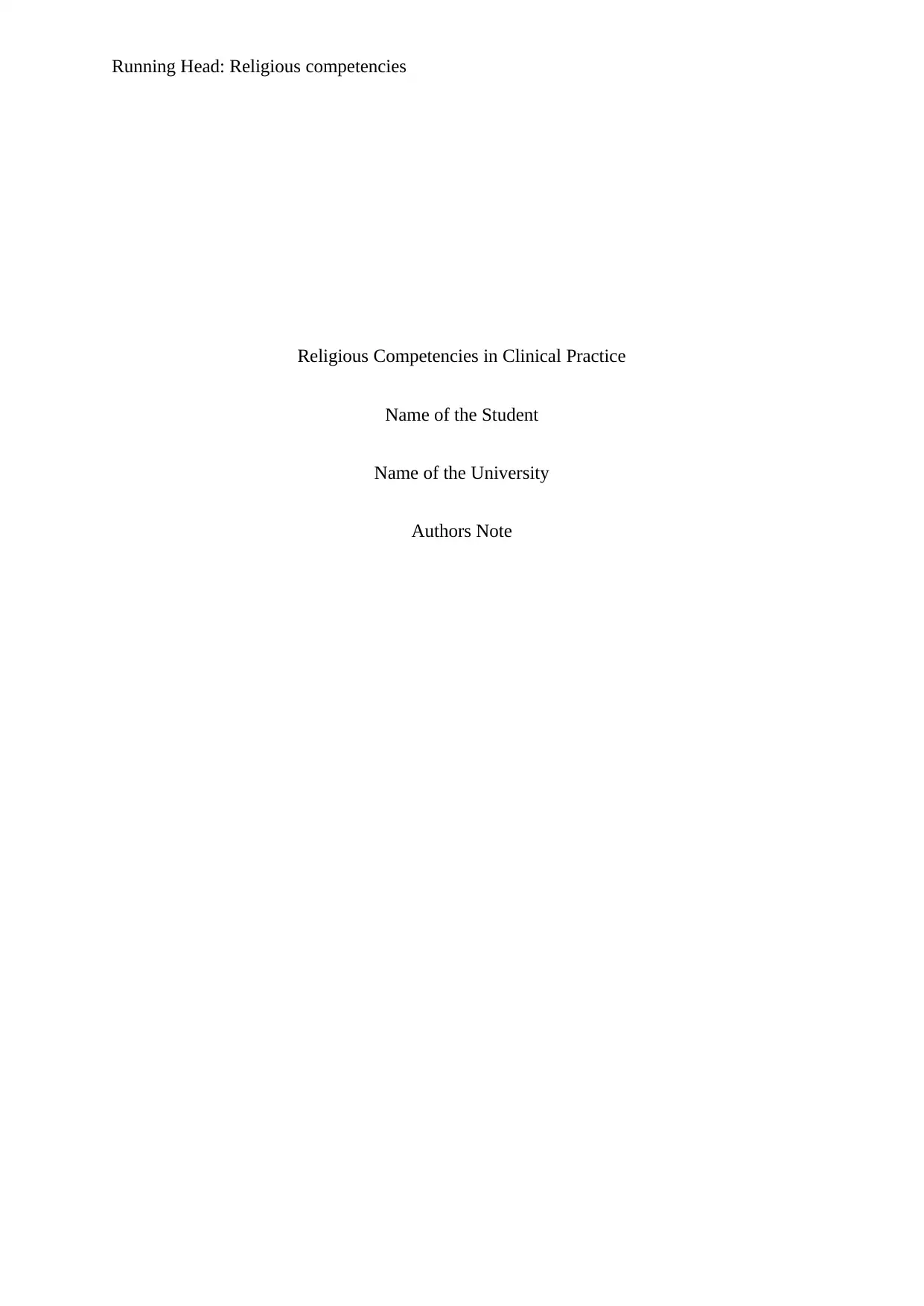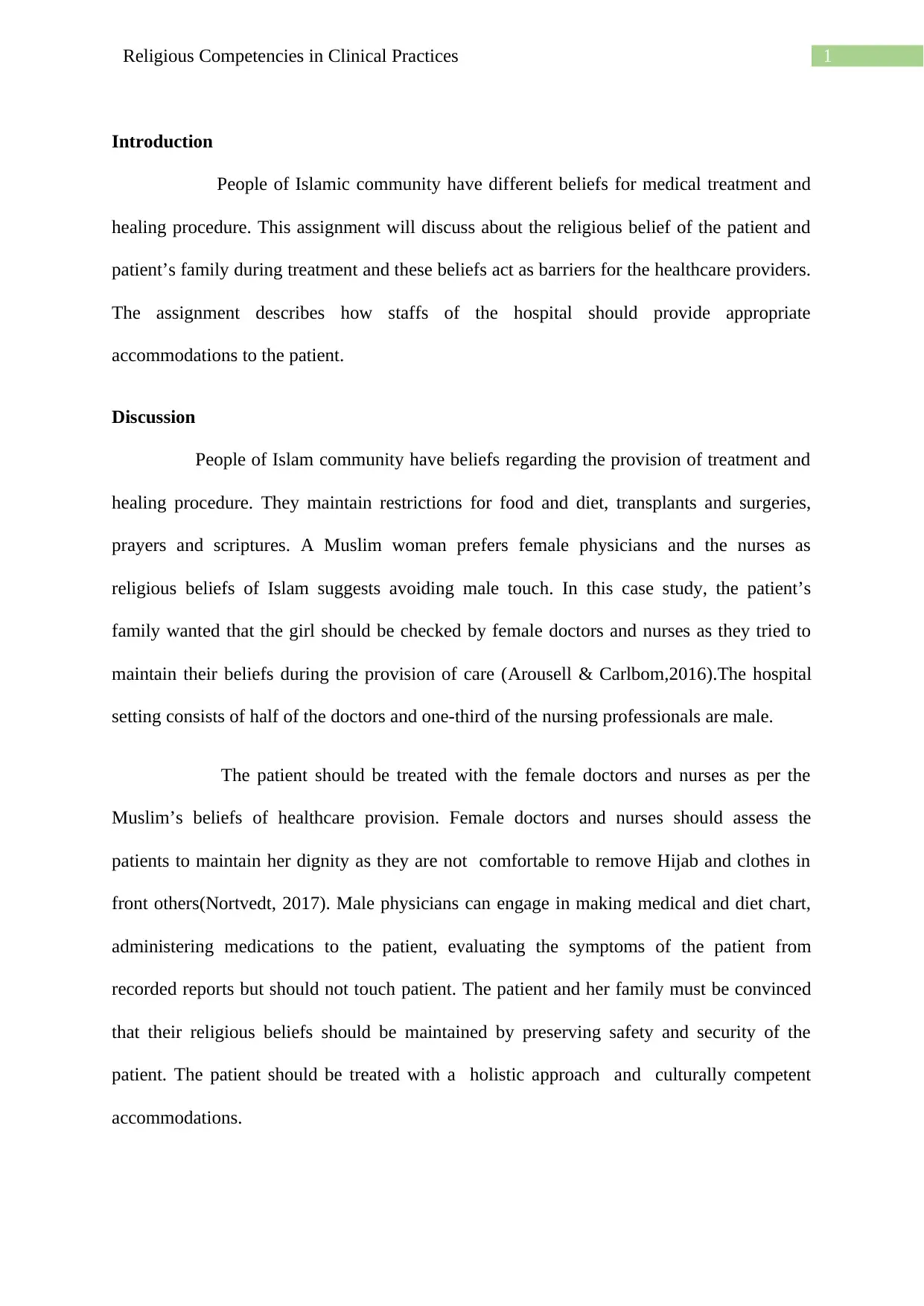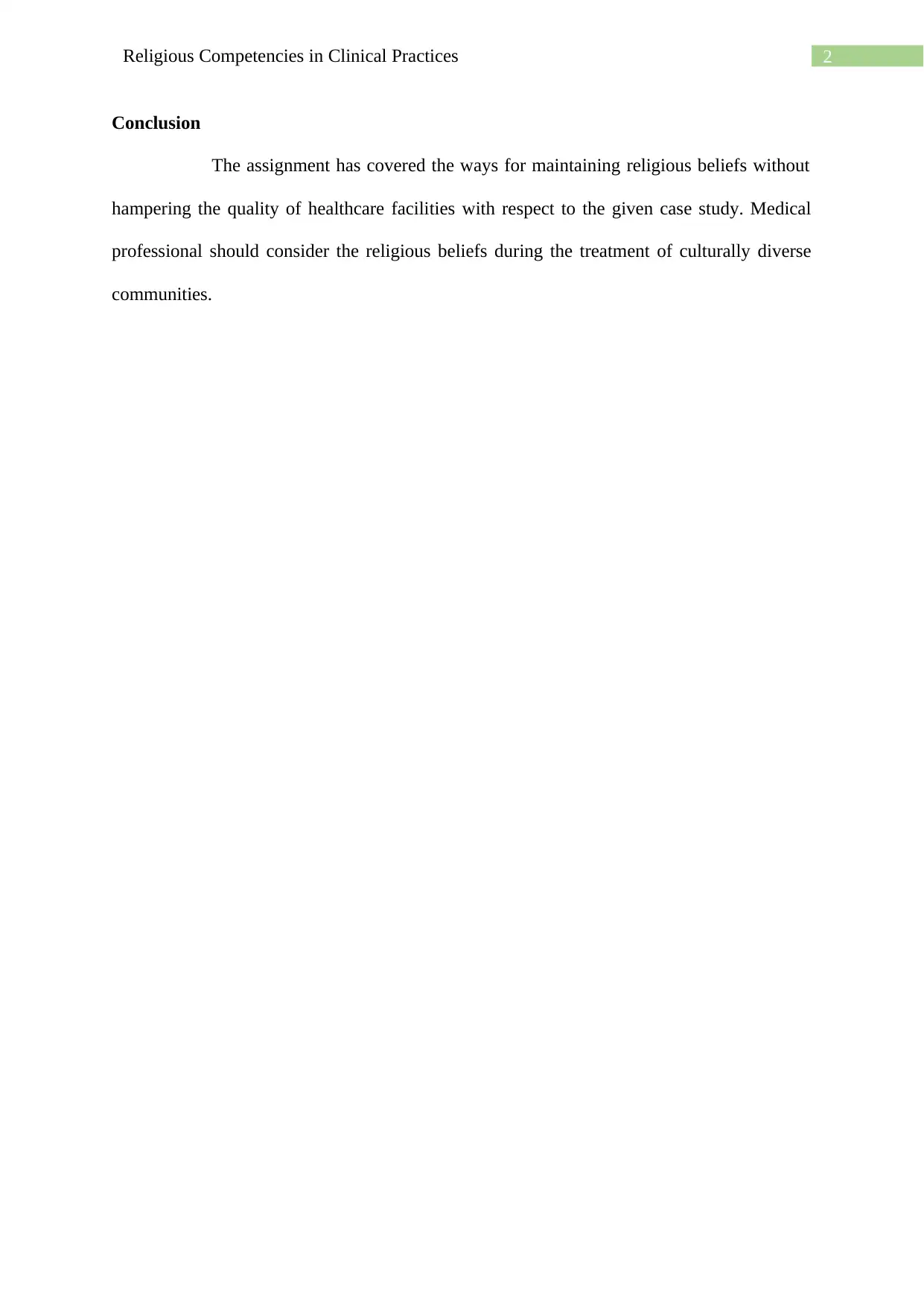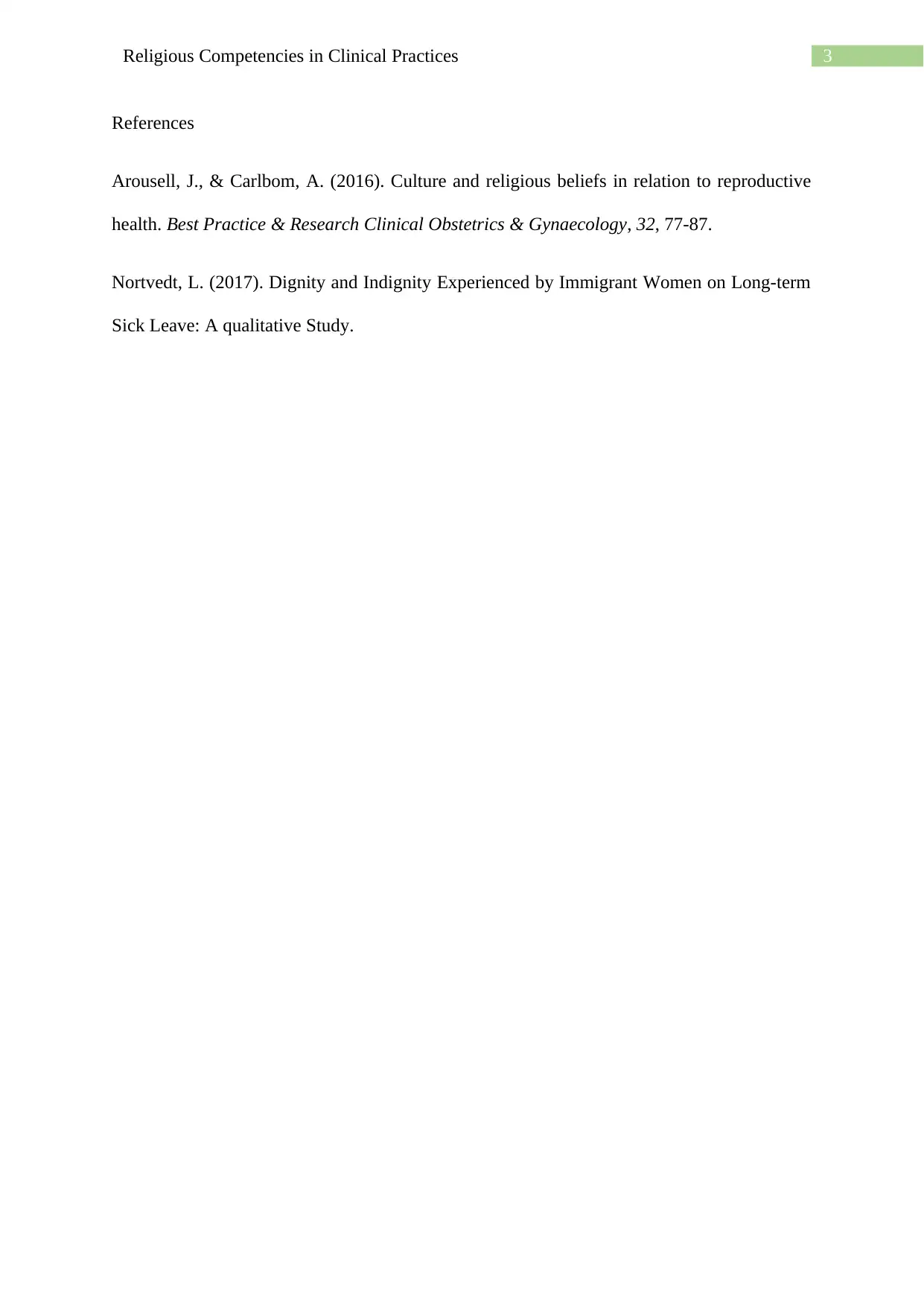Religious Beliefs and Healthcare: A Case Study on Patient Care
VerifiedAdded on 2022/08/25
|4
|424
|19
Case Study
AI Summary
This case study examines the intersection of religious beliefs and healthcare practices, specifically focusing on the care of Muslim patients. The assignment highlights the importance of understanding and accommodating religious beliefs in medical settings, such as the need for female physicians and nurses to maintain patient dignity. The case study explores how hospitals can adapt to religious practices, detailing the need for cultural sensitivity in providing care. It discusses how to balance religious requirements with medical protocols, ensuring patient safety and comfort. The assignment also emphasizes the need for a holistic approach to patient care, considering religious beliefs as a crucial component of the patient's overall well-being. References are included to support the arguments and demonstrate the importance of cultural competence in healthcare environments.
1 out of 4











![[object Object]](/_next/static/media/star-bottom.7253800d.svg)